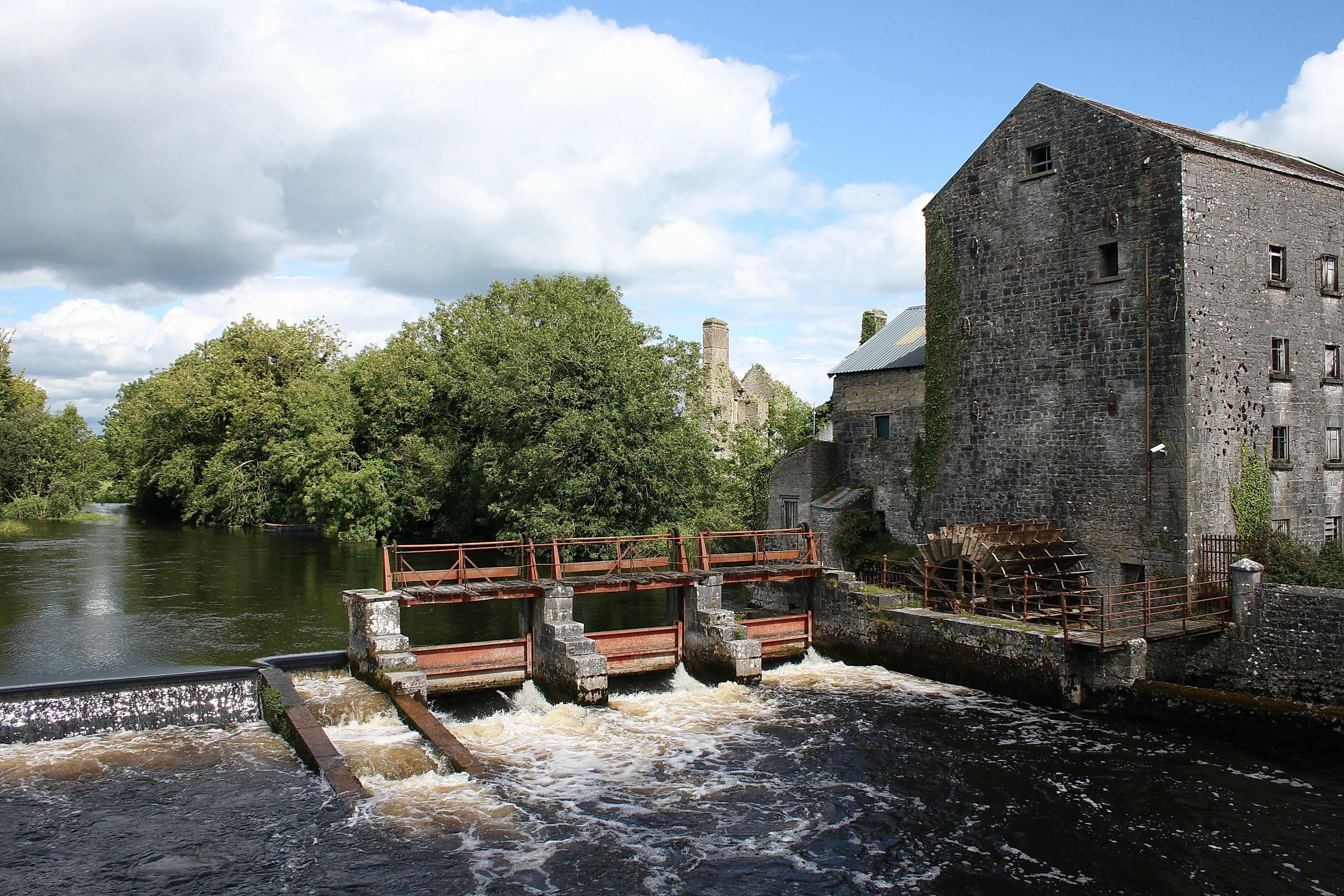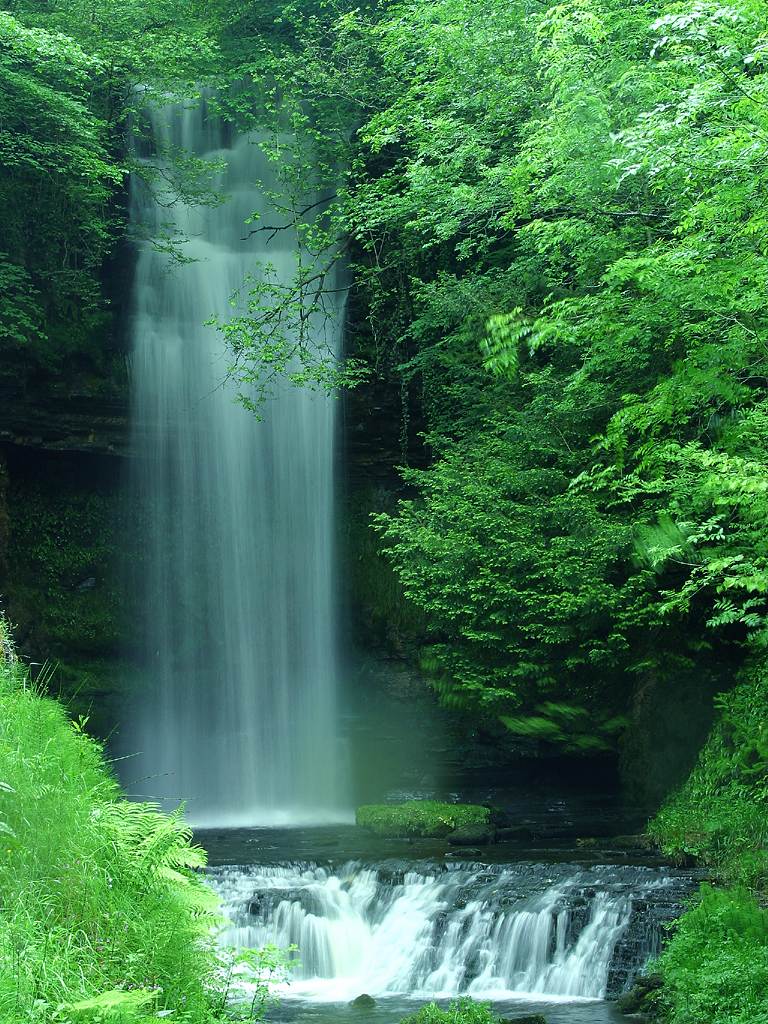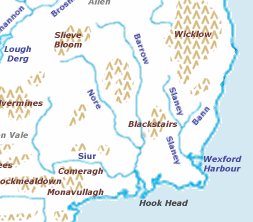|
Rivers Of Ireland
Shown here are all the major rivers and tributaries of Ireland with their lengths (in kilometres and miles). Starting with the Northern Ireland rivers, and going in a clockwise direction, the rivers (and tributaries) are listed in regard to their entry into the different seas: the Irish Sea, the Celtic Sea and the Atlantic Ocean. Also shown are two tables. ''Table 1'' shows the longest rivers in Ireland with their lengths (in kilometres and miles), the counties they flow through, and their catchment areas (in square kilometres). ''Table 2'' shows the largest rivers in Ireland (by mean flow) in cubic metres per second. The longest river in Ireland is the River Shannon, at . The river develops into three lakes along its course, Lough Allen, Lough Ree and Lough Derg. Of these, Lough Derg is the largest. The Shannon enters the Atlantic Ocean at the Shannon Estuary. Other major rivers include the River Liffey, River Lee, River Swilly, River Foyle, River Lagan, River Erne, River Bla ... [...More Info...] [...Related Items...] OR: [Wikipedia] [Google] [Baidu] |
Ireland
Ireland ( ; ga, Éire ; Ulster Scots dialect, Ulster-Scots: ) is an island in the Atlantic Ocean, North Atlantic Ocean, in Northwestern Europe, north-western Europe. It is separated from Great Britain to its east by the North Channel (Great Britain and Ireland), North Channel, the Irish Sea, and St George's Channel. Ireland is the List of islands of the British Isles, second-largest island of the British Isles, the List of European islands by area, third-largest in Europe, and the List of islands by area, twentieth-largest on Earth. Geopolitically, Ireland is divided between the Republic of Ireland (officially Names of the Irish state, named Ireland), which covers five-sixths of the island, and Northern Ireland, which is part of the United Kingdom. As of 2022, the Irish population analysis, population of the entire island is just over 7 million, with 5.1 million living in the Republic of Ireland and 1.9 million in Northern Ireland, ranking it the List of European islan ... [...More Info...] [...Related Items...] OR: [Wikipedia] [Google] [Baidu] |
Munster Blackwater
The Blackwater or Munster Blackwater ( ga, An Abhainn Mhór, The Great River) is a river which flows through counties Kerry, Cork, and Waterford in Ireland. It rises in the Mullaghareirk Mountains in County Kerry and then flows in an easterly direction through County Cork, through Mallow and Fermoy. It then enters County Waterford where it flows through Lismore, before abruptly turning south at Cappoquin, and finally draining into the Celtic Sea at Youghal Harbour. In total, the Blackwater is 169 km (105 mi) long. The total catchment area of the River Blackwater is 3,324 km2.South Eastern River Basin District Management System. Page 38 The long term average flow rate of the River Blackwater is 89.1 cubic metres per second (m3/s) The Blackwater is notable for being one of the best salmon fishing rivers in the country. Like many Irish and British rivers, salmon stocks declined in recent years, but the Irish government banned commercial netting of salmon off t ... [...More Info...] [...Related Items...] OR: [Wikipedia] [Google] [Baidu] |
County Longford
County Longford ( gle, Contae an Longfoirt) is a county in Ireland. It is in the province of Leinster. It is named after the town of Longford. Longford County Council is the local authority for the county. The population of the county was 46,634 at the 2022 census. The county is based on the historic Gaelic territory of Annaly (''Anghaile''), formerly known as Teffia (''Teathbha''). Geography Most of Longford lies in the basin of the River Shannon with Lough Ree forming much of the county's western boundary. The north-eastern part of the county, however, drains towards the River Erne and Lough Gowna. Lakeland, bogland, pastureland, and wetland typify Longford's generally low-lying landscapes: the highest point of the county is in the north-west - Carn Clonhugh (also known as Cairn Hill or Corn Hill) between Drumlish and Ballinalee in the parish of Killoe, at . Cairn Hill is the site of a television transmitter broadcasting to much of the Irish midlands. In the l ... [...More Info...] [...Related Items...] OR: [Wikipedia] [Google] [Baidu] |
County Roscommon
"Steadfast Irish heart" , image_map = Island of Ireland location map Roscommon.svg , subdivision_type = Country , subdivision_name = Ireland , subdivision_type1 = Province , subdivision_name1 = Connacht , subdivision_type2 = Region , subdivision_name2 = Northern and Western , seat_type = County town , seat = Roscommon , leader_title = Local authority , leader_name = County Council , leader_title2 = Dáil constituencies , leader_title3 = EP constituency , leader_name2 = Roscommon–Galway Sligo–Leitrim , leader_name3 = Midlands–North-West , area_total_km2 = 2548 , area_rank = 11th , area_footnotes = , population_total = 69,995 , population_density_km2 = auto , population_as_of = 2022 , population_footnotes = , population_rank = 26th , unemployment_rate = , blank_name_sec1 = Vehicle index ... [...More Info...] [...Related Items...] OR: [Wikipedia] [Google] [Baidu] |
County Leitrim
County Leitrim ( ; gle, Contae Liatroma) is a county in Ireland. It is in the province of Connacht and is part of the Northern and Western Region. It is named after the village of Leitrim. Leitrim County Council is the local authority for the county, which had a population of 35,087 according to the 2022 census. The county encompasses the historic Gaelic territory of West Breffny () corresponding to the northern part of the county, and Muintir Eolais or Conmaicne Réin, corresponding to the southern part. Geography Leitrim is the 26th largest of the 32 counties by area (the 21st largest of the 26 counties of the Republic) and the smallest by population. It is the smallest of Connacht's five counties in both size and population. Leitrim is bordered by the counties of Donegal to the north, Fermanagh to the north-east, Cavan to the east, Longford to the south, Roscommon to the south-west and Sligo to the west. Fermanagh is in Northern Ireland while all the other ... [...More Info...] [...Related Items...] OR: [Wikipedia] [Google] [Baidu] |
County Cavan
County Cavan ( ; gle, Contae an Chabháin) is a county in Ireland. It is in the province of Ulster and is part of the Border Region. It is named after the town of Cavan and is based on the historic Gaelic territory of East Breffny (''Bréifne''). Cavan County Council is the local authority for the county, which had a population of 76,176 at the 2016 census. Geography Cavan borders six counties: Leitrim to the west, Fermanagh and Monaghan to the north, Meath to the south-east, Longford to the south-west and Westmeath to the south. Cavan shares a border with County Fermanagh in Northern Ireland. Cavan is the 19th largest of the 32 counties in area and the 25th largest by population. The county is part of the Northern and Western Region, a NUTS II area, and in that region, is part of the Border strategic planning area, a NUTS III entity. The county is characterised by drumlin countryside dotted with many lakes and hills. The north-western area of the county is spar ... [...More Info...] [...Related Items...] OR: [Wikipedia] [Google] [Baidu] |
River Corrib
The River Corrib ( Irish: ''Abhainn na Gaillimhe'') in the west of Ireland flows from Lough Corrib through Galway to Galway Bay. The river is among the shortest in Europe, with only a length of six kilometres from the lough to the Atlantic. It is popular with local whitewater kayakers as well as several rowing clubs and pleasure craft. The depth of this river reaches up to 94 feet. The Corrib drains a catchment area of 3,138 km2. Although the Corrib is one of Ireland's shortest rivers, it has a mean long-term flow rate of 104.8 m3/s, making it Ireland's second-largest river (by flow), only surpassed by the River Shannon. Naming The translation of the Irish name of the river is ''Galway river'' i.e. from ''Gaillimh''. In Irish it is sometimes called ''An Ghaillimh'' ("the Galway") and also incorrectly called ''Abhainn na Coiribe''. The legend concerning its naming states that it was called after Gaillimh inion Breasail, the daughter of a Fir Bolg chieftain who drowned ... [...More Info...] [...Related Items...] OR: [Wikipedia] [Google] [Baidu] |
River Moy
The River Moy () is a river in the northwest of Ireland. Name Ptolemy's ''Geography'' (2nd century AD) described a river called Λιβνιου (''Libniu'', perhaps from *''lei''- "flow") which probably referred to the River Moy. The Moy is first named in Adomnán's Life of Columba (c. 700) as ''Modam fluvium''. Later spellings include ''Muaide, Muadam, Múed, Múaid''; the name ''An Mhuaidh'' is used in modern Irish. The name is possibly derived from the Old Irish word ''muad'', meaning "noble." Geography The Moy rises at the foot of the Ox Mountains in County Sligo. It flows for . For the greater part of its length, it flows southwestward, entering County Mayo and passing near Swinford before passing through Foxford then turning north near the village of Kilmore and heading for the town of Ballina, where it enters the Atlantic Ocean at Killala Bay. The Moy Estuary is long beginning at Ballina and running into Killala Bay. The catchment area of the River Moy is 2,086 ... [...More Info...] [...Related Items...] OR: [Wikipedia] [Google] [Baidu] |
River Boyne
The River Boyne ( ga, An Bhóinn or ''Abhainn na Bóinne'') is a river in Leinster, Ireland, the course of which is about long. It rises at Trinity Well, Newberry Hall, near Carbury, County Kildare, and flows towards the Northeast through County Meath to reach the Irish Sea between Mornington, County Meath, and Baltray, County Louth. Names and etymology This river has been known since ancient times. The Greek geographer Ptolemy drew a map of Ireland in the 2nd century which included the Boyne, which he called (''Bouwinda'') or (''Boubinda''), which in Celtic means "white cow" ( ga, bó fhionn). During the High Middle Ages, Giraldus Cambrensis called it the ''Boandus''. In Irish mythology it is said that the river was created by the goddess Boann and Boyne is an anglicised form of the name. In other legends, it was in this river where Fionn mac Cumhail captured Fiontán, the Salmon of Knowledge. The Meath section of the Boyne was also known as ''Smior Fionn Feidhli ... [...More Info...] [...Related Items...] OR: [Wikipedia] [Google] [Baidu] |
River Slaney
The River Slaney () is a large river in the southeast of Ireland. It rises on Lugnaquilla Mountain in the western Wicklow Mountains and flows west and then south through counties Wicklow, Carlow and Wexford for 117.5 km (73 mi), before entering St George's Channel in the Irish Sea The Irish Sea or , gv, Y Keayn Yernagh, sco, Erse Sie, gd, Muir Èireann , Ulster-Scots: ''Airish Sea'', cy, Môr Iwerddon . is an extensive body of water that separates the islands of Ireland and Great Britain. It is linked to the Ce ... at Wexford town. The estuary of the Slaney is wide and shallow and is known as Wexford Harbour. The catchment area of the River Slaney is 1,762 km2. The long term average flow rate of the River Slaney is 37.4m3/s Towns that the Slaney runs through include Stratford-on-Slaney, Baltinglass, Tullow, Bunclody, Enniscorthy and Wexford. The river is crossed by 32 road bridges and one railway bridge. Wildlife Varied and plentiful wildlife ... [...More Info...] [...Related Items...] OR: [Wikipedia] [Google] [Baidu] |
River Bann
The River Bann (from ga, An Bhanna, meaning "the goddess"; Ulster-Scots: ''Bann Wattèr'') is one of the longest rivers in Northern Ireland, its length, Upper and Lower Bann combined, being 129 km (80 mi). However, the total length of the River Bann, including its path through the 30 km (19 mi) long Lough Neagh is 159 km (99 mi). Another length of the River Bann given is 90 mi. The river winds its way from the southeast corner of Northern Ireland to the northwest coast, pausing in the middle to widen into Lough Neagh. The River Bann catchment has an area of 5,775 km2. The River Bann has a mean discharge rate of 92 m3/s. According to C. Michael Hogan, the Bann River Valley is a settlement area for some of the first human arrivals in Ireland after the most recent glacial retreat. The river has played an important part in the industrialisation in Northern Ireland, especially in the linen industry. Today salmon and eel fisheries are the m ... [...More Info...] [...Related Items...] OR: [Wikipedia] [Google] [Baidu] |
The Three Sisters (Ireland)
The Three Sisters ( ga, An Triúr Deirfiúr) are three rivers in Ireland: the River Barrow, the River Nore and the River Suir. The Suir and Nore rise in the same mountainous area in County Tipperary, near the Devil's Bit, while the Barrow rises in the Slieve Bloom Mountains in County Laois. The Nore flows into the Barrow about 17 km before the Suir and Barrow join to form an estuary called Waterford Harbour east of the city of Waterford. The rivers fan out to drain a large portion of the southern part of the island, including Counties Tipperary, Carlow, Kilkenny, Wexford and Waterford, among others. The lengths of the three rivers of the Three Sisters are the Barrow - 192 km (119 mi), the Suir - 185 km (115 mi) and the Nore - 140 km (87 mi). The combined catchment area of the Three Sisters is 9,207 km2, made up of the Suir's (3,610 km2), the Barrow's (3,067 km2) and the Nore's (2,530 km2).South Eastern River Basin Di ... [...More Info...] [...Related Items...] OR: [Wikipedia] [Google] [Baidu] |






